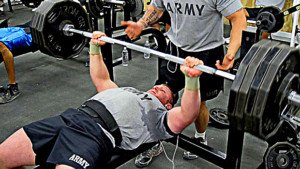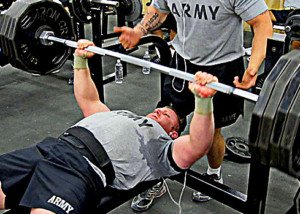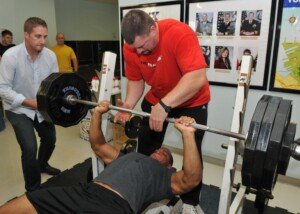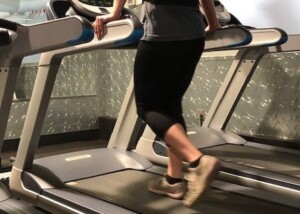Can Perimenopause or Menopause Cause Muscles to Twitch?

There may be a logical explanation for why perimenopause or menopause is linked to twitching muscles, but it’s probably not what you think.
Have you noticed lately that your new-onset muscle twitching seems to have coincided with your entrance into “peri” or menopause? (more…)
Can Menopause Cause Armpit Odor to Change & Get Really Bad ?

We’re not talking about a change in armpit odor strength from increased menopausal perspiration, but an actual change in the odor itself – a really stinky pungent scent.
Have you experienced the following?
• You’re in menopause or have completed it.
• You’ve had hot flashes all along—prior to the beginning of menopause, during and afterward.
• The hot flashes have intensified and you can get pretty doggone sweaty at times.
• And somewhere along the way you’ve begun noticing a DIFFERENT odor to your underarms. And it’s bad.
• This change in odor under your arms correlates to perspiration: The heavier you perspire (whether it’s from a hot flash or exercising), the stronger this new, different odor becomes.
• It’s nothing like the “usual” armpit odor you’ve always been familiar with and that you’ve certainly detected on other sweaty people.
• You may even describe this changed armpit stink as pungent. It’s very strong and unpleasant, unfamiliar to you – and you’re unnerved about it.
• You may even begin wondering if this isn’t related to menopause and instead might be a sign of some kind of cancer.
“In theory, sweating and body odor is in part related to release of certain hormones called androgens,” says Lindsay Appel, MD, an OB-GYN with the Family Childbirth & Children’s Center at Mercy Medical Center in Baltimore.
“Androgen production does change after menopause (it usually decreases), so any changes in body odor could be related to a decrease in androgen hormones in the body,” says Dr. Appel.
I’ve scoured the Internet for an answer to the title question, and all I’ve come up with is how an increase in perspiration, due to menopausal hot flashes, will cause an increase in odor or a more noticeable odor.
But this isn’t about a stronger version of the underarm odor you’ve always been familiar with or an increase in frequency of that smell.
It’s about a different, new smell, a changed odor—a new kid on the block.
And it doesn’t always come with hot flashes—but sweating from exercise brings it out.
Don’t worry, it will eventually subside as your body readjusts to the changes of menopause.
And even though the stink occurs during sweaty exercise, this new, malodorous smell is still most likely being generated from the hormonal changes of menopause.
Maybe you’ve read somewhere that liver cancer can cause a body odor and are now freaking out that you have liver cancer.
Yes, liver cancer can cause a new odor about the body.
But in the meantime, don’t sweat the menopausal stink of your armpits. Just be sure to clean them daily with soap and use an effective deodorant.
 Dr. Appel addresses a full range of obstetric and gynecologic needs for women. She has participated in several OBGYN research presentations at professional conferences.
Dr. Appel addresses a full range of obstetric and gynecologic needs for women. She has participated in several OBGYN research presentations at professional conferences.
 Lorra Garrick has been covering medical, fitness and cybersecurity topics for many years, having written thousands of articles for print magazines and websites, including as a ghostwriter. She’s also a former ACE-certified personal trainer.
Lorra Garrick has been covering medical, fitness and cybersecurity topics for many years, having written thousands of articles for print magazines and websites, including as a ghostwriter. She’s also a former ACE-certified personal trainer.
.
Top image: Shutterstock/Lipik Stock Media
Can a Woman Make Her Breasts Less Dense with Diet or Exercise?

Dense breasts are a risk factor for breast cancer.
In fact, it’s one of the higher risk factors for this disease when the density level is considered to be extremely and even heterogeneously dense.
A woman with dense breasts is four to six times more likely to get cancer when compared to a woman with the so-called fatty breasts.
Dense breast tissue is more prevalent in younger women.
And this is why mammograms are not encouraged for women of average risk who are under the age of 40.
As women age, breast tissue tends to lose its density. About 10 percent of all women have what would be considered dense breasts.
Is there anything a woman can do to make them LESS dense?
Unfortunately, there’s nothing she can do. There is no diet, no supplement, no yoga pose, no type of strength training, no aerobic activity, no pills, shots or drugs – nothing – nothing can change what nature gave her.
“The density of breast tissue usually becomes an issue when undergoing screening for breast cancer, as dense breast tissue can make it difficult to interpret mammogram imaging,” says Lindsay Appel, MD, an OB-GYN with the Family Childbirth & Children’s Center at Mercy Medical Center in Baltimore.
Dr. Appel continues, “Dense breast tissue is made up of connective tissue, blood vessels and ducts. Other tissue in the breast is fat tissue.
“It is more common to have dense breast tissue when women are premenopausal. Exposure to estrogen, like taking birth control pills, can also increase breast density.”
However, there are women with heterogeneously and even extremely dense breasts who have never taken birth control pills or estrogen treatments.
And there are many women with nearly all-fatty breasts who’ve taken birth control pills.
In general, the composition of breast tissue is the cards that a woman was dealt with at conception—her genetic blueprint.
With all that said, you should find out from the radiologist who reads your mammograms what your density level is. There are four categories:
• Fatty
• Scattered density
• Heterogeneously dense
• Extremely dense
Do you know about tomosynthesis?
This is a 3D mammogram. It “sees” things better than does a 2D (the more conventional) mammogram.
Look at it this way: Imagine that you’re standing outside a forest, trying with your eyes to locate a bird’s nest inside of it. That’s a 2D mammogram.
Now imagine that you’re hovering above the forest, an aerial view as you move around, and you’re looking down in search of that bird’s nest. That’s tomosynthesis.
While there is nothing a woman can do to make her breasts less dense, what she CAN do is take measures to live a healthy lifestyle to reduce the risk of cancer, which includes structured exercise sessions and sticking to a plant-based diet.
 Dr. Appel addresses a full range of obstetric and gynecologic needs for women. She has participated in several OBGYN research presentations at professional conferences.
Dr. Appel addresses a full range of obstetric and gynecologic needs for women. She has participated in several OBGYN research presentations at professional conferences.
 Lorra Garrick has been covering medical, fitness and cybersecurity topics for many years, having written thousands of articles for print magazines and websites, including as a ghostwriter. She’s also a former ACE-certified personal trainer.
Lorra Garrick has been covering medical, fitness and cybersecurity topics for many years, having written thousands of articles for print magazines and websites, including as a ghostwriter. She’s also a former ACE-certified personal trainer.
.
Top image: Shutterstock/ESB Professional
Does Having a Big Stomach Make You Bench Press Better?

Why is it that the strongest bench pressers at the gym have big stomachs?
Does a big belly really improve one’s ability to bench press? (more…)
Should You Check for Melanoma if You Have Only a Few Moles ?
If you have only a few moles, this doesn’t mean you can blow these off & think you’ll never get melanoma.
Even if you have ONE small mole, it can still turn into melanoma. (more…)
Causes of Tinnitus in Kids 11 through Teens

Your teen can have tinnitus without you even knowing it, because kids don’t think this is anything to worry about.
But it is: future hearing loss.
Cause of tinnitus in teens?
It’s high level exposure to music, says Rivka Strom, AuD, CCC-A, chief audiologist at Central Hearing LLC in NY.
“Whether they attend concerts without ear protection or listen to their music on their iPods/smartphone with the volume turned up to the highest, they are putting their ears at great risk for damage.”
Alarming Tinnitus Teen Study
Tinnitus was affecting a lot of kids between 11 and 17, as determined in a study of 170 kids.
A little over 54% of the kids in this study reported tinnitus in the previous 12 months.
No — Tinnitus Is NOT an “Old Person” Condition
“Ringing in the ears,” as tinnitus is often known as, is affecting more and more young people, due to our increasingly loud society.
Today’s kids and teens, perhaps more than any past generation, think that loud is cool.
- Everything just has to be as loud as possible.
- The louder the better, they believe.
- It’s as though loud is the new smoking.
Most of the study subjects reported habits that can cause hearing loss such as the use of ear buds and being in very noisy places.
Of the 54% (93 kids) who had experienced tinnitus in the prior 12 months, 51 said they experienced it after listening to loud music.
“If this teen generation continues to expose themselves to very high noise levels,” says Tanit Ganz Sanchez in the study paper (Scientific Reports, 2016), “they’ll probably suffer from hearing loss by the time they’re 30 or 40.”
Nerve cells on a structure called the cochlea can be damaged by loud noise. The cochlea is in the inner ear.
In response to damaged nerve cells, other parts of the inner ear try to take over. This causes tinnitus.
Sanchez warns that if kids and teens continue to engage in listening to loud sounds or being in loud environments, that by the time they are 25 they may have serious hearing loss.
Remember, this generation of youth is being exposed to a whole new level of noise.
So even though you, as parents, somehow made it to young adulthood without significant hearing loss, you cannot use this as a yardstick to measure how your children’s hearing is going to be by the time they’re 25.
It’s time to sit down with your adolescents and teenagers and tell them about tinnitus.
It’s funny how parents who stay on top of their kids’ dental health and vision tests are often the same parents who never give a single thought to hearing!

Dr. Strom is a member of the American Speech Language and Hearing Association and has received several awards including Brooklyn College’s Excellence In Audiology Award.
 Lorra Garrick has been covering medical, fitness and cybersecurity topics for many years, having written thousands of articles for print magazines and websites, including as a ghostwriter. She’s also a former ACE-certified personal trainer.
Lorra Garrick has been covering medical, fitness and cybersecurity topics for many years, having written thousands of articles for print magazines and websites, including as a ghostwriter. She’s also a former ACE-certified personal trainer.
.
Top image: Shutterstock/Lisa F. Young
Source: sciencedaily.com/releases/2016/07/160713101623.htm
Can You Die from an Esophageal Spasm?
An esophageal spasm can feel just like a heart attack or angina from severely clogged arteries.
The esophagus is the “food pipe” through which food and drink go down.
“Esophageal spasms can be painful,” says J. Mark Anderson, MD, DABFM, of Executive Medicine of Texas and who is board certified in family medicine.
“Some people often mistake esophageal spasm for a heart attack,” continues Dr. Anderson.
“It comes on quickly, with little warning and can be quite frightening.
“The causes of esophageal spasm can vary, from ingesting spicy or hot food, drinking alcohol, use of certain medications, excessive stress or acid reflux.”
How long can an esophageal spasm last?
A few minutes to a few hours, says mayoclinic.com.
The esophagus is made of muscle, but not the kind of muscle that’s in your biceps or legs, for instance.
But being that it’s muscle tissue, the esophagus has the potential to go into a spasm, and it can be quite painful.

Shutterstock/New Africa
Symptoms of Esophageal Spasm
• The chest pain can be intense.
• There may be a squeezing sensation.
• It’s enough to make the patient fear a heart attack in progress and prompt that person to head to the emergency room.
• Doctors cannot distinguish between the chest pain of an esophageal spasm and that of a heart attack based upon the patient’s report of the symptoms.
This is why an ER doctor will order a blood test to check for a heart attack.
• There may be difficulty swallowing liquids.
• A sensation that something is stuck in your throat.
• Regurgitation of food or beverages.
Some people get very frightened when an esophageal spasm hits—not because they fear it might be a heart attack (they may have already had extensive cardiac workups showing a normal heart), but because they think this muscle spasm might kill them.
According to mayoclinic.com, “abnormal functioning of nerves that control the muscles” that you use for swallowing seem to be a cause.
According to the mayoclinic.com section on esophageal spasms, they are not fatal. In fact, there’s not even a “complications” page for this disorder.
The fact that the pain of an esophageal spasm can mimic a heart attack is no reason to believe that such a spasm can be fatal.
Opposing Information on Another Medical Site
However, on the “Prognosis” page for esophageal spasm on the medscape.com site, it states at near the top: The mortality rate is minuscule, but the morbidity rate is high.
Below the first paragraph is a header, Mortality/morbidity. The first line states: Mortality is very rare, but morbidity can be significant.
“Morbidity” means presence of disease. Morbidity can be caused by restriction in eating (e.g., inadequate nutrients) that’s related to the condition.
The last paragraph of this subsection on the page states: Primary esophageal motility disorders rarely progress and are not known to be fatal.
The next subsection, “Complications,” states: Esophageal perforation can occur with esophageal dilatation, leading to admission to the hospital, time lost from work, and possible surgery.
Surgery can result in complications such as perforation, infection and pneumonia—three conditions that the patient can die from.
But these are secondary to the esophageal spasm, so technically, the cause of death would be complications from a surgery.
Dr. Anderson explains, “While esophageal spasms are not fatal, some underlying causes, such as cancer, can be fatal. Keep in mind that esophageal cancer is rare and not one of the common causes of esophageal spasm.”

Dr. Anderson is coauthor of the award-winning book, “Stay Young: 10 Proven Steps to Ultimate Health,” and host of the nationally syndicated Staying Young Show which goes to podcast as Staying Young Show 2.0.
 Lorra Garrick has been covering medical, fitness and cybersecurity topics for many years, having written thousands of articles for print magazines and websites, including as a ghostwriter. She’s also a former ACE-certified personal trainer.
Lorra Garrick has been covering medical, fitness and cybersecurity topics for many years, having written thousands of articles for print magazines and websites, including as a ghostwriter. She’s also a former ACE-certified personal trainer.
.
Top image: ©Lorra Garrick
Sources
mayoclinic.org/diseases-conditions/esophageal-spasms/basics/definition/con-20025653
mayoclinic.org/diseases-conditions/esophageal-spasms/basics/symptoms/con-20025653
emedicine.medscape.com/article/174975-overview#a2
Slow Jogging at Walking Speed Compared to Regular Jogging

How does a slow jog compare to a regular jog when it comes to fitness and calories burned? (more…)
Can a Teen GIRL’s Growth Be Stunted from Strength Training?

Girls have different bodies than boys, so it’s logical to wonder if lifting weights can stunt a teen girl’s growth.
Your teen daughter—as young as 13—may be expressing an interest in strength training—either for sports enhancement, fitness or even weight loss. (more…)
Heavy Drinking vs. Binge Drinking’s Effect on the Liver








































































